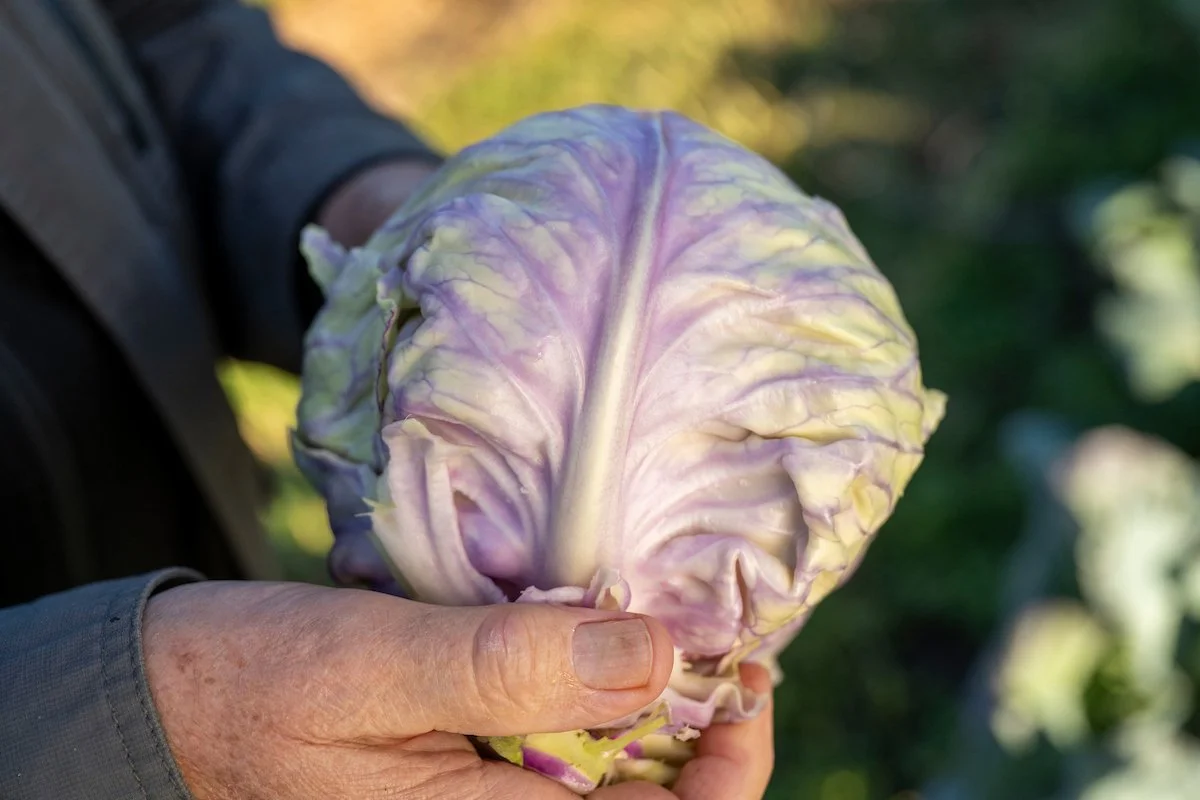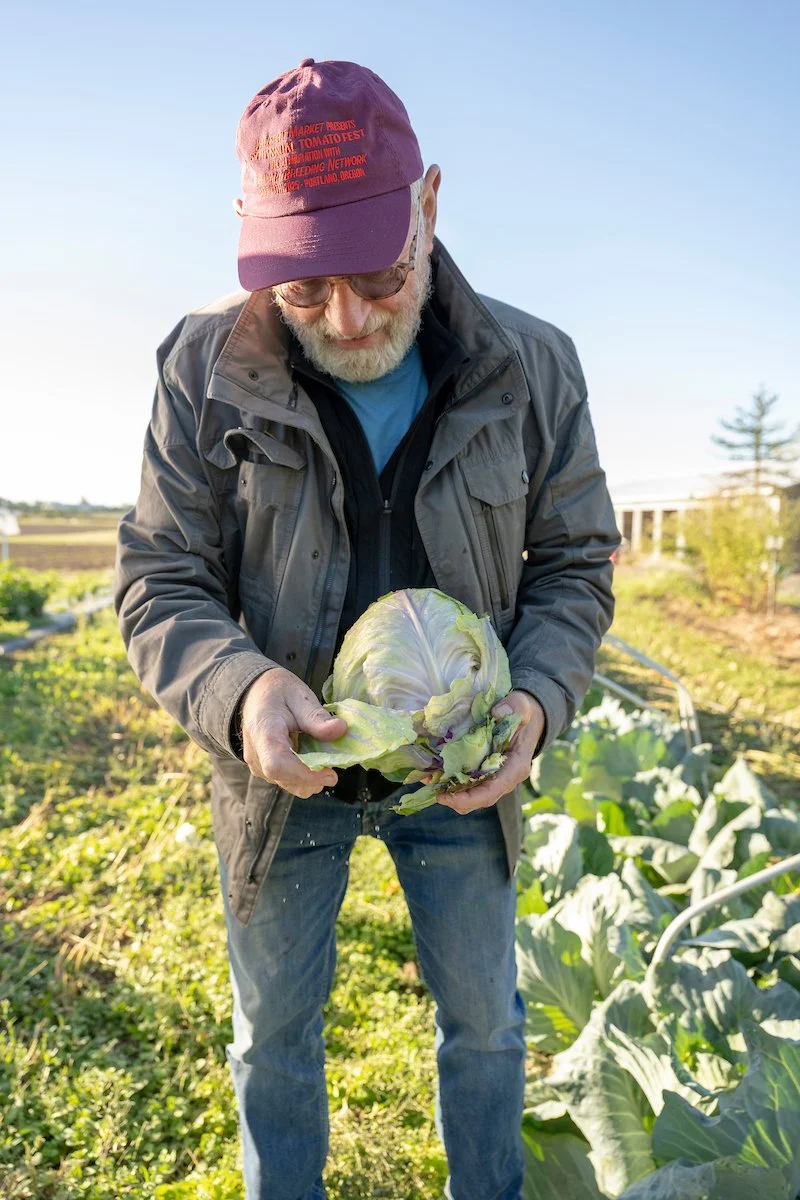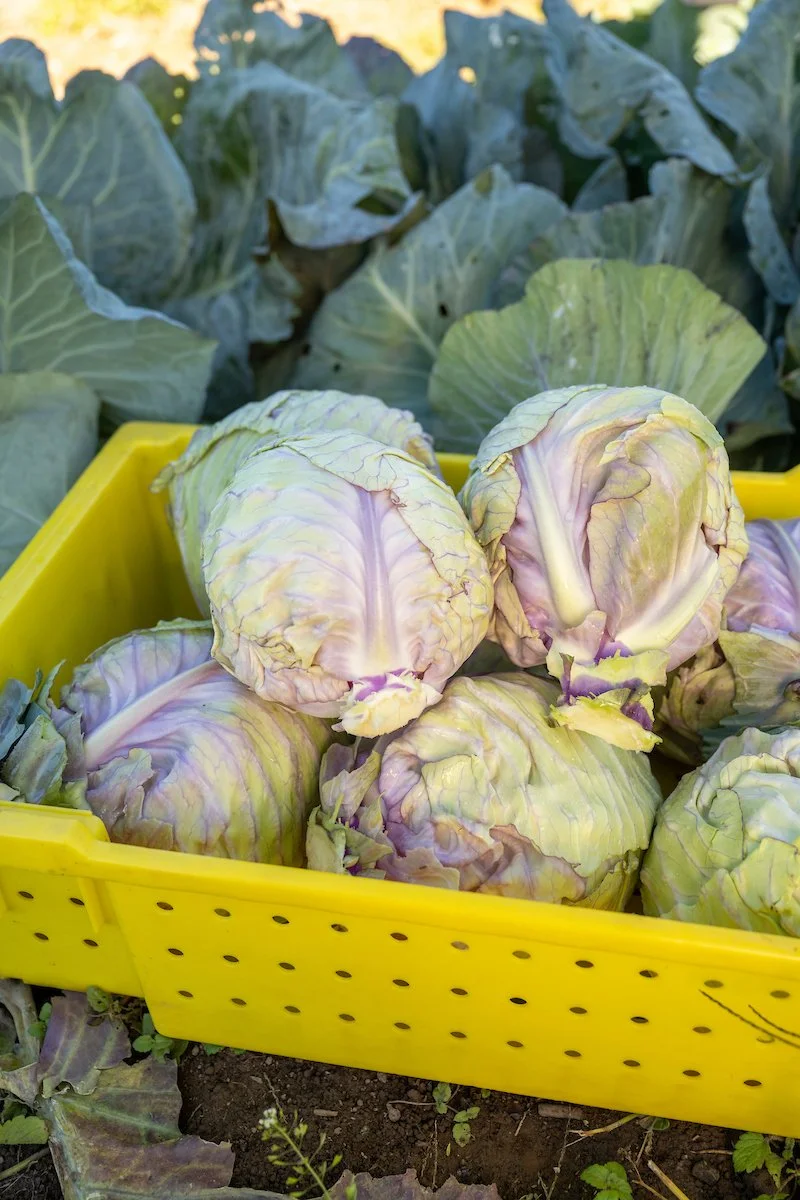Rosé Cabbage
(Brassica oleracea)
This Rosé Cabbage was grown as part of the Breaking Vegetable Boundaries organic research project led by Cornell University plant breeders Michael Mazourek and Phillip Griffiths. These novel vegetables are being trialed on organic farms across the Pacific Northwest, Northeast, and Southeast. The goal is to help farmers introduce new and exciting crops that align with changing consumer preferences - ultimately offering eaters healthier, more flavorful, and more diverse vegetable choices.
Brassica oleracea is a highly diverse species in the mustard family that includes many well-known vegetables that are actually all variations of the same species, selectively bred for different traits and different plant parts, including leaves, stems, flower buds, or terminal buds.
Leaves: Kale, Collard greens
Flower: Broccoli, Cauliflower, Romanesco
Buds and Shoots: Broccolini, Brussels sprouts (tiny buds along the stem)
Stem: Kohlrabi (swollen stem)
Head: Cabbage
Rosé Cabbage is a striking new variety developed by crossing several pigmented cabbage types—ranging from pink to red to deep purple—to produce plants with beautifully vibrant pink-hued leaves. Bred for its visual appeal, tender texture, and versatility in the kitchen, it brings a fresh twist to a familiar vegetable. This Breaking Vegetable Boundaries cabbage aims to expand what’s possible with Brassicas by combining exceptional flavor, culinary performance, and market appeal in innovative new varieties.
How to prepare:
Rosé Cabbage gets its vibrant pink color from anthocyanins, which are natural pigments that are sensitive to pH. When cooked in neutral or alkaline environments, like plain water or oil, these pigments can fade or shift to dull blue or gray tones. To help maintain its bright color, cook it briefly and add an acidic ingredient, such as vinegar or lemon juice, which helps stabilize the pigment and preserve its vivid hue.





